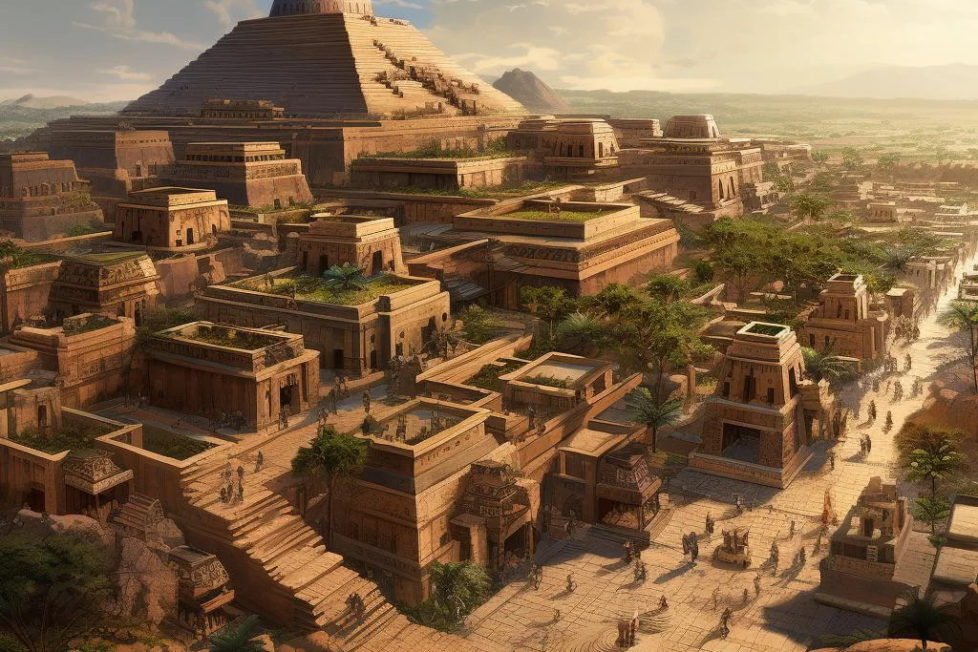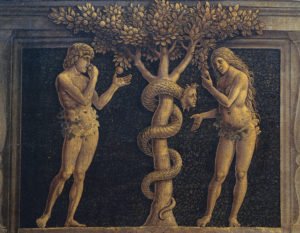Eden Revisited



I have previously written about the garden of Eden and a great many authors have produced narratives mostly based on the old Testament and the Torah, but in my quest to understand the karma affecting the modern world, I have taken a different approach by looking at world history and our social evolution.
That evolution begins with the end of the last ice age some twenty thousand years ago and here, the researcher Graham Hancock is probably right in saying that an advanced civilisation with a global reach existed as evidenced by the monolithic stonework found on every continent.
This somewhat ancient civilisation likely coexisted amongst the diverse tribes of people who perhaps saw them as gods, but we can only speculate as to their nature and how they treated the tribespeople in various regions. While we cannot dispute the evidence of the ancient stonework, the details although speculative are part of our evolution and must be included in our quest to understand the how we came to be as we are today.
Now we come to the event known as the Younger Dryas which for the inhabitants on many regions of Earth represented a thousand years of cataclysmic violence and probably the demise of entire populations. One of those later events is the biblical ‘great flood’ known as the ‘meltwater pulse one B’ which filled the Black Sea and helped to create the waterway from the Mediterranean through the Aral Sea from where ships were able to navigate the Oxus River and into the North of India.
The points above summarise an existent pattern and one of my arguments is that after enduring a distressful thousand years, the minds of those human survivors who adapted during those difficult years sought to create a lifestyle that could endure both the tantrums of nature and the problems of the human mind which is at times prone to extremes of selfishness and violence.
This is where Shiva the first Yogi comes into this picture of human evolution, and it is from his teachings that were disseminated by the Saptarishis that we learn that the keys to our endurance as individuals and as a collective species are only found by looking inwards though yoga and meditation.
This new knowledge spread across the world and the people created what became known as Sanatana Dharma, a way of living in which women resided as the pinnacle of creation, and a resolution for all human problems achieved through gratitude and praise. It is from this foundation that the Hindu sciences and a universal needs-based economy emerged. The world for a time could well have been described as a Garden of Eden.
Here we come to the argument about the Tree of Knowledge that took place perhaps some eight or nine thousand years ago where some individuals unable to grasp the greater sense of reality in regard to living on earth with a collective existence refused to cooperate. They saw themselves as individuals separate from society with their own individual needs and a desire to possess not only the fruits of their own creations but through the fear they were manifesting, they also wanted control over other people’s behaviour and what they were producing.
There was now trouble in Paradise, irrational desires were beginning to flourish leading to argument and conflict. By this time the concept of Sanatana Dharma that had evolved out of an India covering most of Asia had become a global phenomenon. Sanatana Dharma encourages acceptance and can be tolerant of a certain amount of bad behaviour, but there comes a point when if someone is disrupting your house and making life unpleasant, you must tell them to go.
The troublemakers were problematic not because they were nonconformists, but because they were beginning to practice an economy based on desire as opposed to actual needs. This was leading the people astray and in a historic sense, this was the beginning of capitalism and a hierarchical social structure. For those who followed the ideals of Sanatana Dharma and primarily worked for the welfare of others, these upstarts desiring control and who continually interfered were evicted from paradise.
That is my take on the Garden of Eden story, but it goes much further because the flames of desire had been ignited and for those suffering from this newfound sense of desire as some might say saw the whole world is their oyster to be harvested and consumed for their pleasure.
India was the heartland of this story and even today it remains as a great centre of civilisation that has never been completely conquered. But as this desire based capitalism spread around the globe, India became infected simply through its need to trade and in terms of needs, trade must accommodate the reality or beliefs of both parties. It is also likely that this infection was another cause of the Kurukshetra war.
There we have it, there were once godly people perhaps as portrayed in stories of the Greek gods who disappeared in a cataclysm after which ordinary people sought a way to best endure the vagaries of the earth and of each other. The practices of yoga for self enquiry led to the evolution of Sanatana Dharma which sustained the entire world for a time until capitalists emerged and were evicted for creating disharmony, or it could be seen that those who followed Sanatana Dharma were evicted because they refused to be drawn into the game.
We know what happened after that, in the capitalist world men took charge because they were physically stronger and they capitalised their women and men who were creative and profits in power and monetary terms took precedent over life which had the unfortunate effect of corrupting the societies that followed Sanatana Dharma.
The Garden of Eden
A Needs-based economy
DISCLAIMER: The author is solely responsible for the views expressed in this article. The author carries the responsibility for citing and/or licensing of images utilized within the text.
